Canada Mayflower
- October 17, 2023
- 0 comment
Canada Mayflower, scientifically known as Maianthemum canadense, is a delicate and enchanting wildflower native to North America, particularly thriving in the eastern parts of Canada and the United States. Also commonly referred to as “wild lily of the valley” or “false lily of the valley,” this perennial plant belongs to the Lily family, and it is treasured for its dainty, star-shaped, white blossoms and bright red berries.
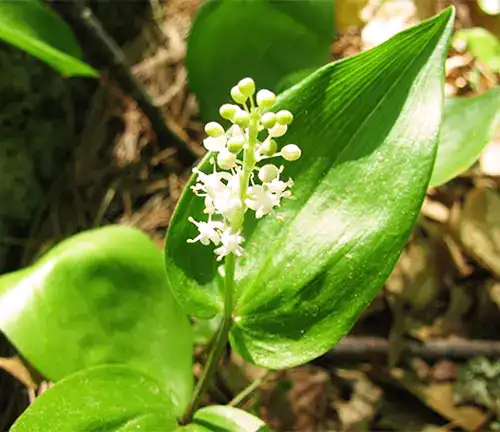
Canada Mayflower typically graces the forest floors and woodlands, casting a subtle and elegant beauty. It is a symbol of resilience, as it can flourish in a variety of habitats, from damp, shaded woods to sun-dappled clearings.
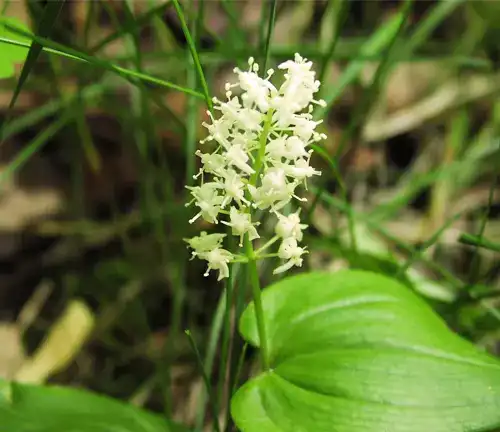
While its charming appearance makes it a favorite among wildflower enthusiasts and gardeners, it also has a storied history of medicinal use by indigenous peoples and early European settlers. With its unassuming yet captivating presence, the Canada Mayflower stands as a testament to the natural beauty and rich botanical heritage of North America.
| Characteristics | Description |
| Scientific Name | Maianthemum canadense |
| Common Name | Canada Mayflower |
| Family | Asparagaceae (formerly Liliaceae) |
| Habitat | Woodlands, forests, and shaded areas |
| Distribution | Eastern North America (Canada and the United States) |
| Plant Type | Perennial herb |
| Height | 15-30 cm (6-12 inches) |
| Leaves | Alternate, heart-shaped, dark green |
| Flowers | Small, white, star-shaped, in clusters |
| Bloom Time | Late spring to early summer |
| Fruit | Bright red berries |
| Special Features | Shade-tolerant, spreads via rhizomes |
| Uses | Ornamental, historically used for medicinal purposes |
| Conservation Status | Not considered endangered |
Botanical Beauty of “Canada Mayflower”
The Canada Mayflower, or Maianthemum canadense, stands as a prime example of the natural world’s delicate and timeless charm. This exquisite wildflower, native to the woodlands and shaded regions of eastern North America, captures the hearts of all who chance upon it. Its botanical beauty is a testament to the simple elegance that can be found in the most unassuming places. With its star-shaped, white blossoms and bright red berries, the Canada Mayflower paints a serene portrait of nature’s grace.
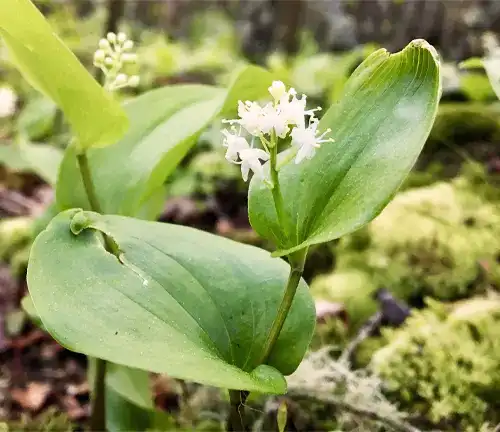
Woodland Elegance
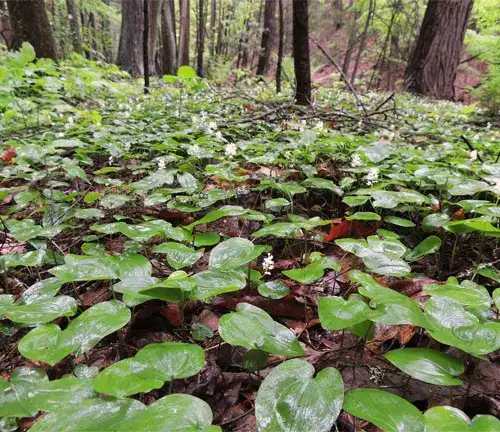
As its name suggests, the Canada Mayflower often graces the forest floors and woodlands, providing a touch of elegance to these shaded sanctuaries. The plant’s heart-shaped, dark green leaves create a lush carpet of green, and its dainty white flowers add a touch of ethereal beauty to the dappled sunlight filtering through the trees. This wildflower thrives in the hushed serenity of the woods, where its presence is a reminder of the quiet grandeur of nature.
Ecological Importance
Beyond its aesthetic appeal, the Canada Mayflower plays a crucial role in the ecosystems it inhabits. Its presence provides shelter and sustenance for various wildlife, including insects and small mammals. The plant’s berries are a source of food for birds, which aids in seed dispersal. Additionally, it contributes to the overall biodiversity of forest ecosystems, enhancing the resilience of these environments.
Cultivation and Conservation
Cultivating Canada Mayflower is a task that requires careful consideration. This perennial herb, though not difficult to grow, thrives in shaded, woodland settings with moist, well-drained soil. Conservation efforts are important to ensure the survival of this wildflower, as its natural habitat is often threatened by land development and habitat destruction. The Canada Mayflower’s presence is a reminder of the importance of preserving native flora and the delicate balance of our ecosystems.

Fragrance
While the Canada Mayflower is not renowned for its fragrance like some other wildflowers, its subtle, earthy scent is a part of its woodland charm. The fragrance is often more pronounced when the plant is disturbed, releasing a mild, herbal aroma that complements its understated beauty.
Soil Stabilization
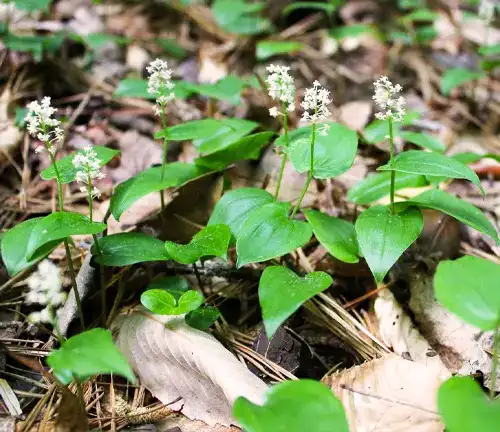
One of the less-known attributes of the Canada Mayflower is its role in soil stabilization. Its rhizomatous growth habit helps bind soil particles together, preventing erosion in the forest understory. This subtle but vital function contributes to the overall health of forest ecosystems by maintaining soil integrity and preventing nutrient runoff.
Common Uses
The Canada Mayflower has a history of both traditional and contemporary uses. Indigenous peoples and early European settlers utilized this plant for various medicinal purposes, including treating ailments such as headaches and sore throats. In modern times, it remains a popular choice among wildflower enthusiasts and gardeners for its aesthetic appeal and naturalistic landscaping.
Benefits
The Canada Mayflower offers a plethora of benefits, both aesthetically and ecologically. Its beauty enhances natural landscapes, while its presence supports local wildlife and helps stabilize forest soils. Cultivating and conserving this exquisite wildflower is essential to protect its role in our ecosystems and preserve the charm it brings to woodland environments. This unassuming plant stands as a reminder that even the most understated natural wonders have their place in the tapestry of our world’s beauty.
Different Species
False Solomon’s Seal
(Maianthemum racemosum)
This species is often called False Solomon’s Seal or Feathery False Lily of the Valley. It has similar appearance to Canada Mayflower, with arching stems and white, fragrant flowers. It’s native to North America and can be found in woodlands and shady areas.
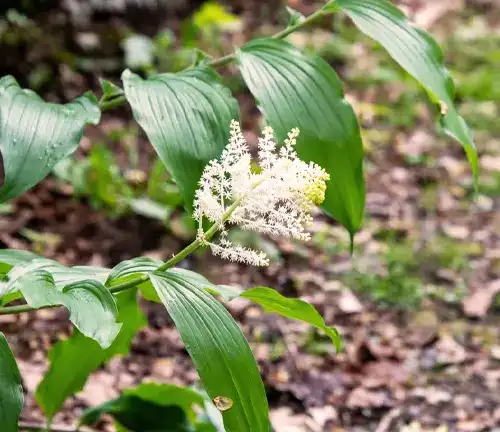
Wild Lily of the Valley
(Maianthemum dilatatum)
Also known as False Lily of the Valley, this species is native to western North America, from Alaska to California. It has similar characteristics to Canada Mayflower, with white, fragrant flowers and red berries.
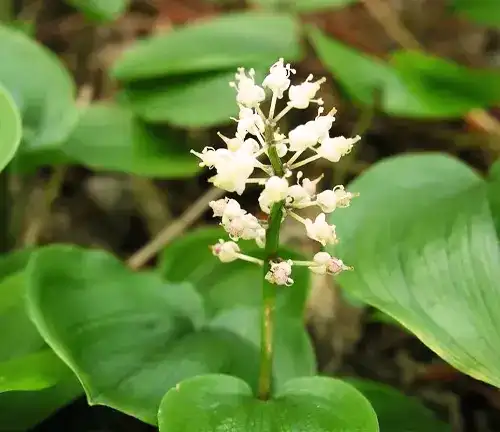
Large False Solomon’s Seal
(Maianthemum stellatum)
This species is native to North America and is commonly found in woodlands and shaded areas. It features white, star-shaped flowers and red berries, similar to Canada Mayflower.
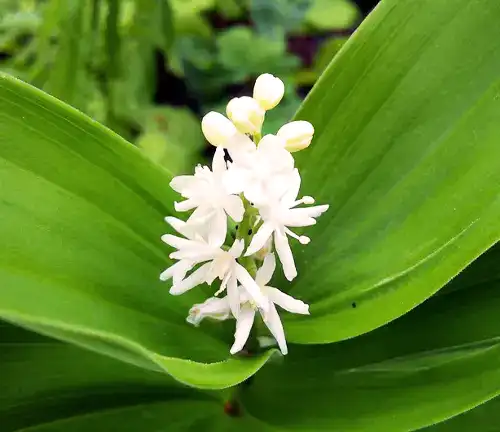
Pygmy False Lily of the Valley
(Maianthemum nuda)
This species is native to eastern North America and is known for its diminutive size. It has tiny, white flowers and is often found in moist, shaded woodlands.
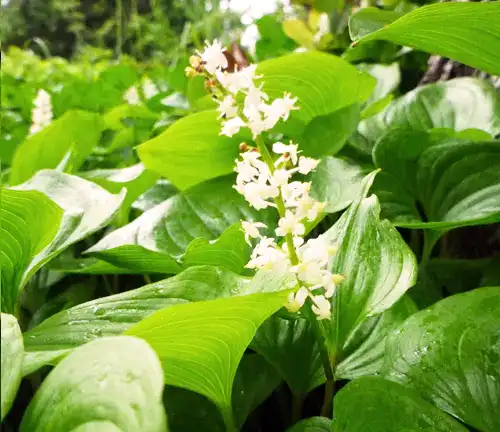
Maianthemum bifolium
This species is native to Europe and Asia and is sometimes referred to as “False Lily of the Valley.” It has two leaves (hence the name bifolium) and small, white flowers. It is distinct from Canada Mayflower in terms of its geographic distribution.
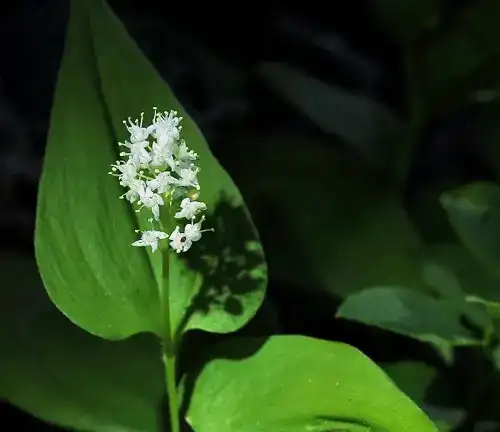
Frequently Asked Questions (FAQs)
- What is Canada Mayflower?
Canada Mayflower (Maianthemum canadense) is a native North American wildflower found in woodland and shaded areas. It is known for its small, white, star-shaped flowers and red berries. - Where is Canada Mayflower found?
Canada Mayflower is primarily found in the eastern parts of North America, including Canada and the United States. It thrives in woodlands, forests, and shaded regions. - Is Canada Mayflower related to lilies of the valley?
Canada Mayflower is often called “wild lily of the valley” due to its resemblance to lilies of the valley. However, it belongs to a different botanical genus. - What is the ecological importance of Canada Mayflower?
Canada Mayflower provides shelter and food for wildlife, contributes to biodiversity in forest ecosystems, and helps stabilize soil. It plays a vital role in maintaining the health of woodland environments. - Can I grow Canada Mayflower in my garden?
Yes, Canada Mayflower can be cultivated in shaded, moist, and well-drained garden settings. It’s a favorite among native plant enthusiasts and gardeners. - Are there any medicinal uses for Canada Mayflower?
Historically, indigenous peoples and early European settlers used Canada Mayflower for various medicinal purposes, such as treating headaches and sore throats. However, its medicinal use is not widespread today. - What is the conservation status of Canada Mayflower?
While Canada Mayflower is not considered endangered, conservation efforts are essential to protect its natural habitat, as it is often threatened by land development and habitat destruction. - Does Canada Mayflower have a fragrance?
Canada Mayflower has a subtle, earthy fragrance. Its scent is more noticeable when the plant is disturbed, emitting a mild, herbal aroma. - Are there different species of Mayflower?
Yes, there are related species and varieties of Maianthemum, commonly known as “Mayflowers” or “false lilies of the valley.” Some of these include False Solomon’s Seal, Wild Lily of the Valley, Large False Solomon’s Seal, and Pygmy False Lily of the Valley. - What are the benefits of Canada Mayflower?
Canada Mayflower offers both aesthetic and ecological benefits. Its beauty enhances natural landscapes, while it supports local wildlife and helps stabilize forest soils. Cultivating and conserving this wildflower is essential for preserving its role in ecosystems and its woodland charm.





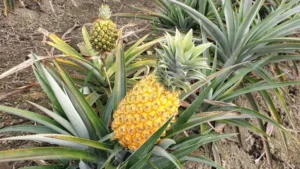
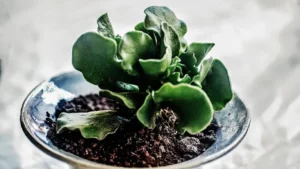

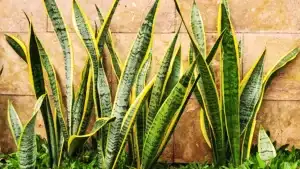




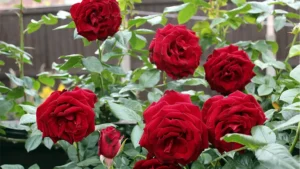
Leave your comment